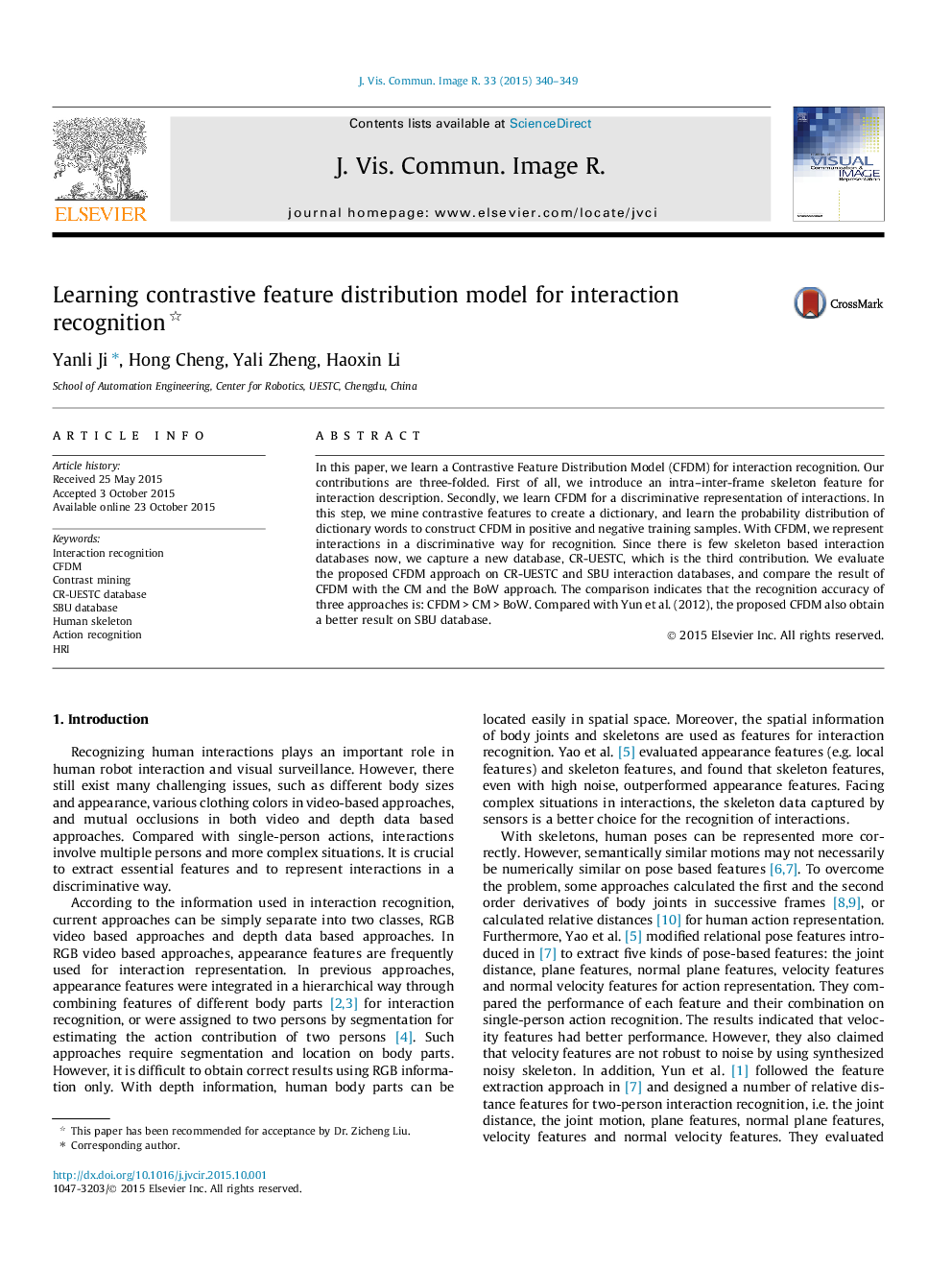| Article ID | Journal | Published Year | Pages | File Type |
|---|---|---|---|---|
| 528567 | Journal of Visual Communication and Image Representation | 2015 | 10 Pages |
•We introduce an intra–inter-frame skeleton feature for interaction description.•We learn CFDM for a discriminative representation of interactions.•We capture a new database of interactions, CR-UESTC.•We evaluate our proposed CFDM approach on CR-UESTC and SBU interaction databases.•CFDM performs better than CM and BoW, and obtains a higher accuracy than previous works.
In this paper, we learn a Contrastive Feature Distribution Model (CFDM) for interaction recognition. Our contributions are three-folded. First of all, we introduce an intra–inter-frame skeleton feature for interaction description. Secondly, we learn CFDM for a discriminative representation of interactions. In this step, we mine contrastive features to create a dictionary, and learn the probability distribution of dictionary words to construct CFDM in positive and negative training samples. With CFDM, we represent interactions in a discriminative way for recognition. Since there is few skeleton based interaction databases now, we capture a new database, CR-UESTC, which is the third contribution. We evaluate the proposed CFDM approach on CR-UESTC and SBU interaction databases, and compare the result of CFDM with the CM and the BoW approach. The comparison indicates that the recognition accuracy of three approaches is: CFDM > CM > BoW. Compared with Yun et al. (2012), the proposed CFDM also obtain a better result on SBU database.
